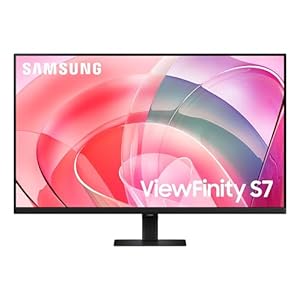Back in 1999, Wall Street lost its collective mind over the internet. Companies with no revenue were suddenly worth billions, “eyeballs” were treated as currency, and market analysts predicted a frictionless future where everything would be digital. Then the bubble burst. Between March 2000 and October 2002, an estimated five trillion dollars in market value vanished into thin air.
Today, it is happening again. This time, the magic word is not “.com.” It is “AI.”
According to Torsten Slok, the influential chief economist at Apollo Global Management, a major global investment firm, the current AI driven market bubble is even more stretched than the dot com frenzy of the late 1990s. And he has the data to prove it.
“The difference between the IT bubble in the 1990s and the AI bubble today is that the top 10 companies in the S&P 500 today are more overvalued than they were in the 1990s,” Slok wrote in a recent research note that was widely shared across social media and financial circles.
The Chart That Should Worry Everyone
The chart from Apollo compares the 12 month forward price to earnings (P/E) ratios of the top ten companies in the S&P 500 against the rest of the index. In plain English, a P/E ratio measures how expensive a stock is by comparing its price to its profits. A high P/E ratio means investors are paying a premium and are betting on strong future growth.
Slok’s chart reveals something stunning: in 2025, the P/E ratios of the top ten companies are even higher than they were at the absolute peak of the dot com bubble in 2000.
Torsten Slok: “The difference between the IT bubble in the 1990s and the AI bubble today is that the top 10 companies in the S&P 500 today are more overvalued than they were in the 1990s” pic.twitter.com/OEervHU4WG
— zerohedge (@zerohedge) July 16, 2025
This means investors are betting so aggressively on AI giants like Nvidia, Microsoft, Apple, and Google that their stock prices have become detached from their actual earnings, even more so than tech darlings like Cisco and AOL were in the nineties. The top 10 companies driving this frenzy, which hold the most significant market value on Wall Street, include tech titans like Nvidia, Microsoft, Apple, Alphabet (Google), Amazon, and Meta. It is a super concentrated AI frenzy that is pushing a handful of mega cap stocks into nosebleed territory.
A Narrow Rally Lifting the World
You have probably heard that the S&P 500 is performing well this year. Here is the uncomfortable truth: most of those gains are coming from just those ten companies. The other 490 companies in the index are barely moving.
This kind of narrow rally is incredibly risky. It means the health of the entire stock market is dependent on the performance of a very small number of firms. If Nvidia sneezes, the entire market could catch a cold. The problem is that Wall Street is treating AI as if it has already fulfilled every promise, from a productivity revolution to trillion dollar cost savings. The potential is being priced as a certainty, even though most of those gains have not yet materialized.
Have We Learned Nothing Since 2000?
In 1999, the internet was real. It did change everything. But that fact did not stop investors from wildly overpaying for companies that could not deliver on the hype.
The parallels with today’s AI excitement are chilling. Every corporate earnings call now dutifully mentions an “AI strategy,” just like every company in 1999 slapped on a “.com” to its name. Stocks are surging on the vague potential of AI, not necessarily on real, current revenue.
Wall Street is pricing in a perfect AI future without acknowledging the enormous risks: regulatory crackdowns, staggering compute costs, model hallucinations, or simply a slower than expected adoption rate. As Slok’s chart shows, the market is pricing these top ten AI heavy firms as if they are invincible. That is never a good sign.
AI Might Be Bigger Than the Internet, but That Is Not the Point
This is not a question of whether AI will change the world. It will, just as the internet did.
The real question is how much investors are willing to pay today for profits that might not arrive for years, if ever. If history teaches us anything, it is that bubbles do not pop because the technology is fake. They pop when investor expectations dramatically outpace reality and the flow of easy money dries up. The more Wall Street bets on AI perfection, the more fragile this market rally becomes.
What Happens Next?
If corporate earnings do not catch up to these sky high valuations, and soon, the market may not even need a specific trigger to deflate. The valuations alone could do the job. And when bubbles pop, they do not do so politely. They implode, wiping out trillions in value and shattering investor trust in the process.
The technology called AI will certainly survive. The top ten companies likely will too. But the portfolios chasing this dream without a parachute might not. Just like in 2000, when it seemed the internet had made financial gravity obsolete, the AI hype train is speeding toward a cliff it thinks it can fly over. Torsten Slok is just reminding us that we have been here before.
Trending Products

Acer Chromebook 314 CB314-4H-C2UW L...

Sceptre 4K IPS 27″ 3840 x 216...

SAMSUNG 32-Inch ViewFinity S7 (S70D...

KEDIERS G8 Pre-Installed 6 × 120mm...

HP 15.6″ Touchscreen Laptop, ...

15.6” Laptop computer 12GB DD...

Thermaltake View 200 TG ARGB Mother...

Logitech MK345 Wireless Keyboard an...

Logitech MK120 Wired Keyboard and M...






